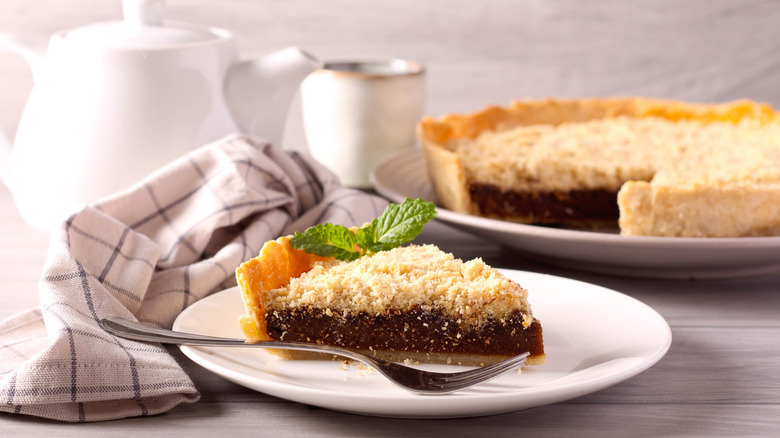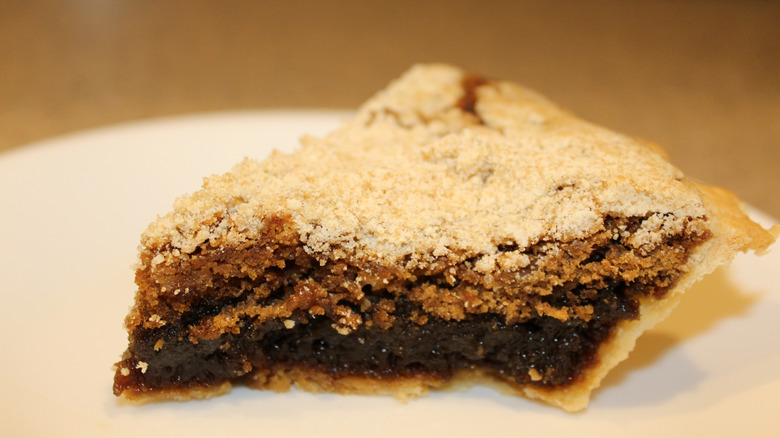How Shoofly Pie Became A Pennsylvania Dutch Favorite
Unlike the story behind Fig Newtons, the histories behind Pennsylvania Dutch cuisine and culture are far from hidden. As people migrated from Germany and settled in eastern Pennsylvania in the 18th century, they picked up the habit of pie baking from English residents. This culinary practice laid the groundwork for the creation of a timeless and delicious dessert that attracts people to Pennsylvania Dutch country just to try a slice: shoofly pie.
In addition to its rich flavor, another strength of shoofly pie is that it does not necessarily need to be refrigerated. This sweet and sticky pie has been around since around 1876, well before fridges were common household items and has traditionally been baked with only a few nonperishable ingredients: lard, flour, brown sugar, and molasses. When you remember that molasses is one of the two ingredients you need to make brown sugar, it is easier to understand why shoofly pie is the perfect cure for even the most persistent of sweet tooths.
Bakers between generations make small edits to their family recipes to make this dessert their own, but they don't often stray too far from the basic ingredients. The flavors of shoofly pies often remind people of the connection between previous generations that this pie stands for. Whether it is a family gathering, fair, or community celebration, shoofly pies are sure to be found in Pennsylvania Dutch country.
Variations on shoofly pie
There are variations on both the origin story of the shoofly pie and the dessert itself across Pennsylvania Dutch country. While most people accept that this pie got its name because of how bakers had to "shoo" flies away from the sticky-sweet pies while they cooled, others associate the name with "Shoofly the Boxing Mule." This animal was known for boxing local horses with a traveling circus; eventually, Shoofly became the name of a molasses brand and people drew the connection between the mule and molasses-based pie.
When it comes time for you to try a shoofly pie yourself, you should know that there are two main varieties of shoofly pie: wet bottom and dry bottom. For a shoofly pie with a gooey, custard-like texture perfectly complemented with crumb toppings and molasses syrup filling, you will want a wet bottom shoofly pie.
Dry bottom shoofly pie, on the other hand, features a treat with a consistency more similar to a cake. This texture is achieved by adding in more flour and sugar, as well as clocking in for a longer baking time. While dry bottom pies make for great coffee cake alternatives, wet bottom pies are delightfully moist and may be what you're looking for if you crave something smoother.

